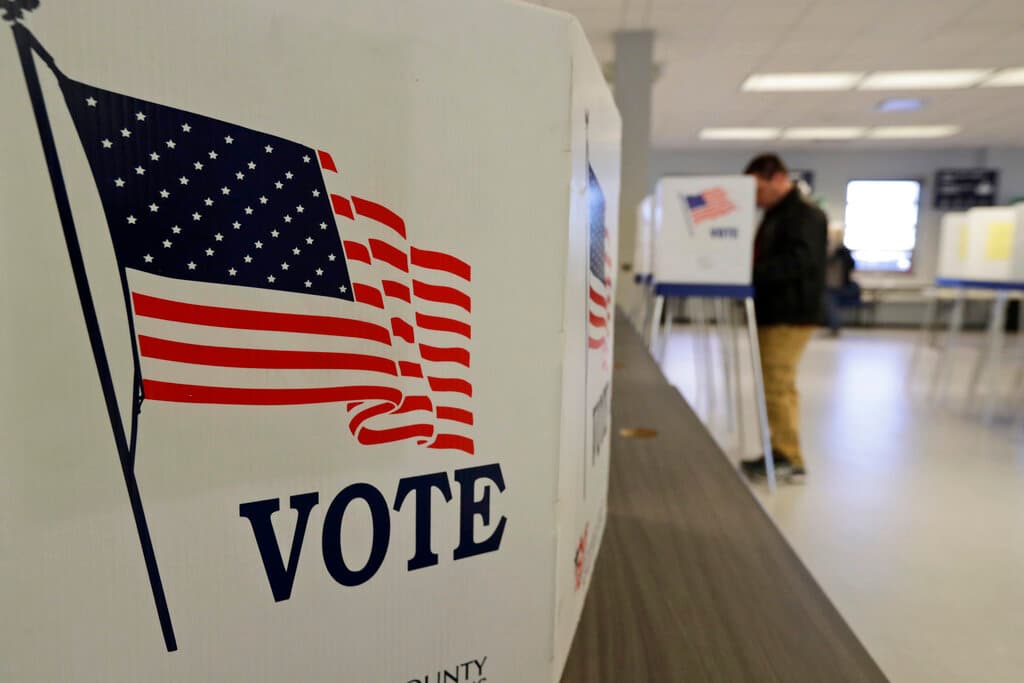New York District Map Proposals Flood In to Special Master
‘Fair maps sort of pass the eye test — you get comparable numbers in competitiveness.’

After months of litigation New York is finally set to begin drawing new district maps for Congress and state senate. In the days since the Court of Appeals decision on redistricting, dozens of maps and proposals have been submitted to the court, giving a good idea of what New York’s districts could look like.
“At this rate it’s being crowdsourced,” an Empire Center fellow, Cam MacDonald, told the Sun. “In two weeks, he has plenty of information to draw fair maps.”
Mr. MacDonald is referring to the information that has been provided to the court-appointed special master who will be responsible for delivering the new congressional and state senate district maps to New York, Johnathan Cervas of Carnegie Mellon University.
“Fair maps sort of pass the eye test — you get comparable numbers in competitiveness,” Mr. MacDonald said. Naturally, different parties have submitted maps that would serve different interests.
Mr. MacDonald pointed to maps submitted in the interest of defending those submitted by the Democrat-led legislature, which were tossed as biased after a court battle.
A map from the New York senate majority leader and assembly speaker proposes four Republican districts and 19 Democratic districts with three competitive districts — an identical split to the maps that were declared unconstitutional.
A Republican proposal calls for a map that largely maintains the status quo, with Republicans controlling roughly 27 percent of the state’s congressional delegation.
This is in line with the Empire Center’s proposed map, which creates 16 Democratic districts, seven Republican districts, and three competitive districts.
Other proposals stress different considerations, such as that submitted by the Westchester County executive, George Latimer, asking the court to maintain many of the current political divisions in Westchester and Rockland counties.
He notes that the state constitution requires map drawers to “consider the maintenance of cores of existing districts, of pre-existing political subdivisions, including counties, cities, and towns, and of communities of interest.”
Further submissions include concerns about immigrant communities in New York City; specific religious communities such as upstate Mennonites and downstate Orthodox Jewish communities; and other communities of interest that need to be taken into account.
These concerns are multiplied in the state senate maps, where Mr. Cervas must draw 63 districts taking into consideration the fabric of communities across New York.
The division of Rochester into five or six state senate districts — many of which would stretch far into rural areas — is a prime example of the sort of districting that could be seen as diluting representation of the people there.
The division of the Buffalo-Niagara Falls metropolitan area into five state senate seats tells a similar tale, one that Mr. MacDonald and the NAACP argue should be avoided.
Although the task ahead is daunting, Mr. MacDonald was confident that Mr. Cervas would be able to complete the maps by the May 20 deadline and that elections would be able to happen on their revised schedule.
The courts agreed with him, rejecting a federal lawsuit contending that New York could not legally delay its primary until August 23, pending approval from the federal court in Albany.
Although there may be some smaller hiccups along the way, such as polling places not being available on August 23 that would have been usable on June 28, Mr. Macdonald believes that there is ample “flexibility” to keep elections on track.
New York appears poised to get new congressional district maps similar to those used for the last decade and perhaps some marked improvements in the quality of the state senate maps.
Pending some sort of unforeseen development, it also looks like the state’s primaries will be set to go forward on their newly adopted schedule.

